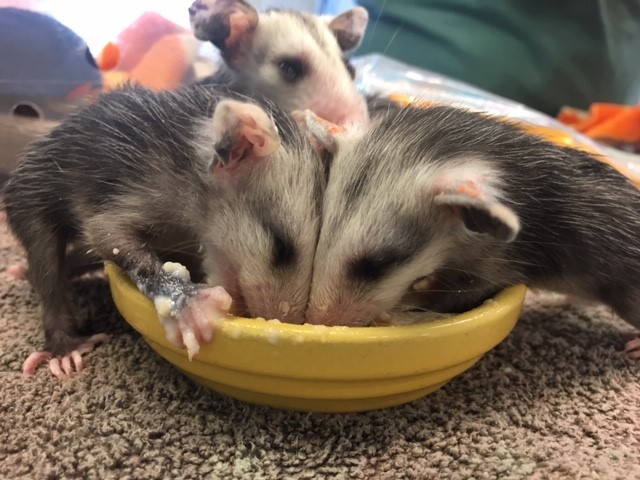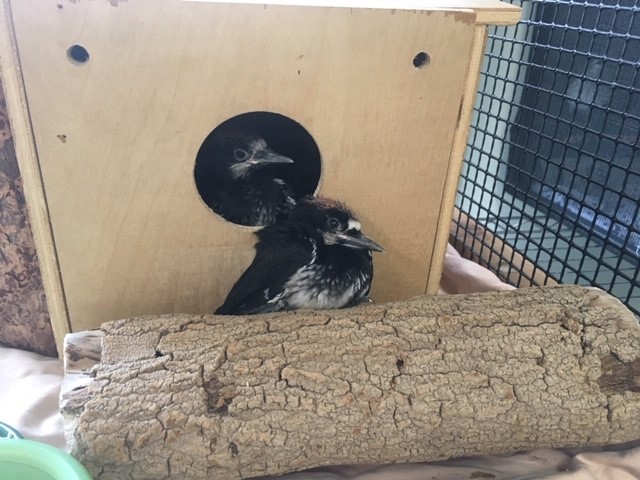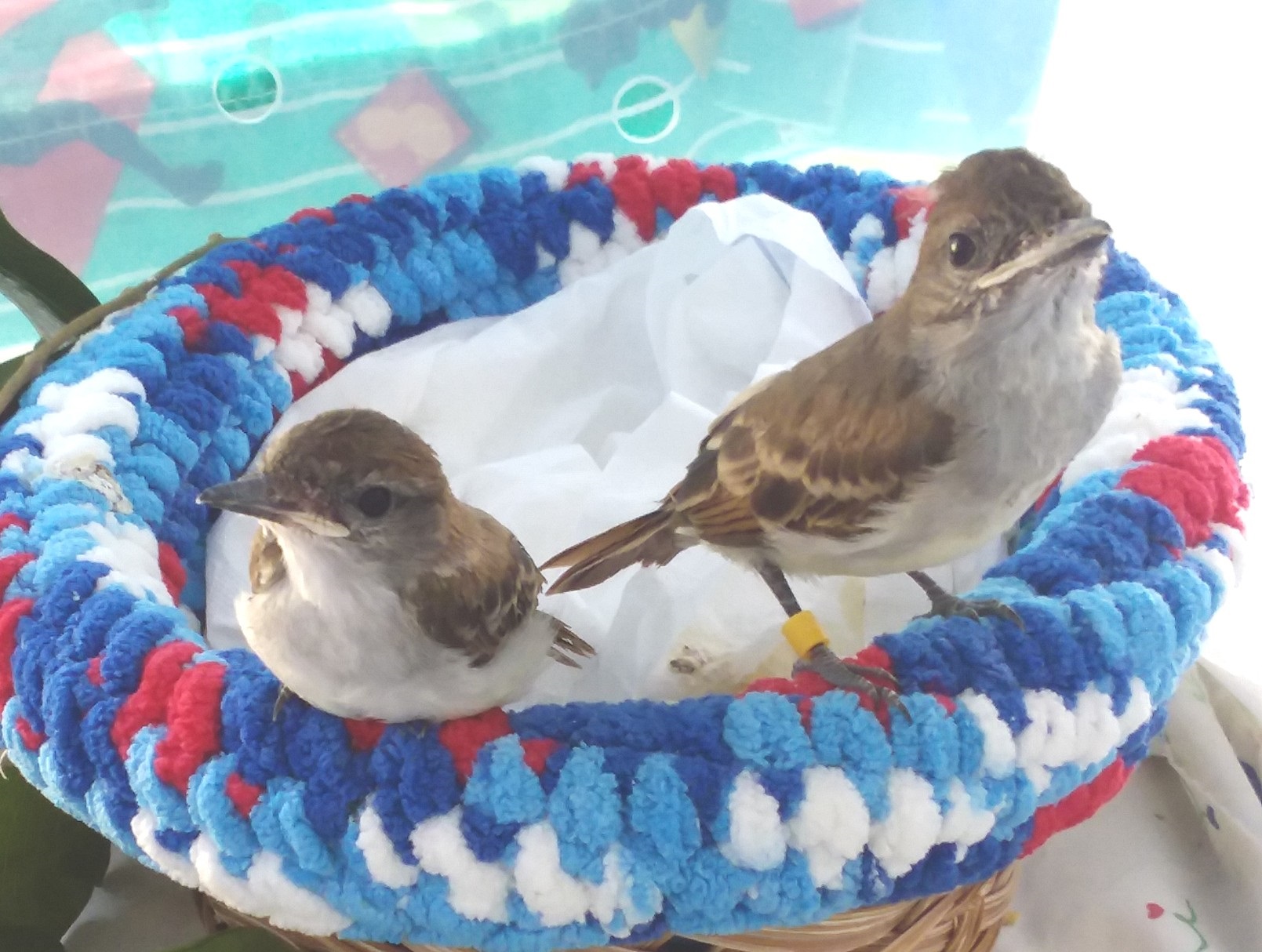An Orphan Care Baby Book
By Cambria Wells, Wildlife Technician
There’s nothing quite like seeing your baby experience the world for the first time. We are privileged at CWC in the Orphan Care Unit to get to work with a wide range of species and to see all their firsts. A few, this year, were especially touching.
First solid food: This year’s earliest litter of Virginia Opossums entered our facility too young to be out of their mother’s pouch. After weeks of careful care, they were finally old enough to be offered something more substantial than formula… and immediately made a mess of themselves! Staff and volunteers adapted by giving them supervised time with their food dish, breaks in the day that we quickly dubbed “mush bowl parties,” followed by a sponge bath.

Opossum joeys eating their mush bowl
Photo by Cambria Wells
First steps: The Acorn Woodpeckers rescued from a fallen tree branch this summer were happy to stay in their nest box upon intake, but soon enough, their excitement for food led them to lean out the entryway to the box. One morning, that lean turned into a jump, and we caught a nestling’s first “branching” out into the world!

Acorn Woodpeckers peeking out of their nest box
Photo by Cambria Wells
First of their species: When workers brought down an electric pole in Santa Clarita this July, the crew heard crying from within an old woodpecker cavity inside. With the help of the wildlife biologist onsite, they extracted young Ash-throated Flycatchers from their disrupted nest and brought them to be raised in the Orphan Care Unit. These are the first of this species of bird ever to be raised at our facility.

Ash-Throated Fly Catchers
Photo by Heather Patrice Brown
First friends: Many babies come into our care alone, displaced from their whole family. These animals are almost always placed with foster siblings; for certain highly social species like Eastern Fox Squirrels and American Crows, these friends are believed to be critical to their survival post-release. When released in a group, young animals have more eyes to find food and watch for predators. Volunteers and staff find these relationships to be touching glimpses into the lives of the animals we work with.

Squirrels napping together
Photo by Samantha Orzech
We are grateful to all CWC supporters for making these precious moments possible, and especially to our dedicated Orphan Care Unit volunteers for giving up their summers to help orphaned and injured wildlife. This year, Orphan Care supported a total of 1052 patients! Our impact, by the numbers:
Squirrels: 175
Mourning Doves: 138
Band-tailed Pigeons: 21
Northern Mockingbirds: 85
Virginia Opossums: 80
House Finches: 90
Cliff Swallows: 47
Hummingbirds: 141
American Crows: 66
Common Ravens: 30
And MANY assorted species of songbirds!
As the unit closes for the winter, we look forward to resting from the busy season and getting ready for next year, but of course, the rest of California Wildlife Center is here year-round for wildlife of all ages.
